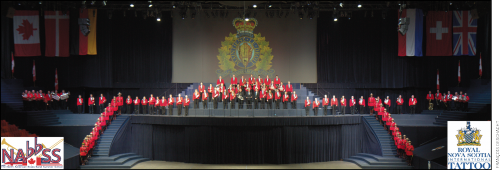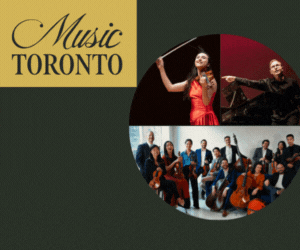Here we are; it’s September, summer is either almost over or hasn’t started, depending on who you talk to. Summer and music mean different things to different community band members. Some bands close down for summer, some are busier than ever with various outdoor performances, and some, like the Uxbridge Community Concert Band, are summertime-only bands. As for band members, many are away on vacations or at cottages, but a few get more deeply involved with music by attending music camps or summer music schools. The latter is what happened in our household. We had been involved in the administration of music camps some years ago, but going to school was different. This year we decided to enroll as participants in a music summer school.
 NAbbSS: If you have not previously heard of the North American Brass Band Summer School, that’s because it had never happened before. While the all-brass band movement has its devotees in Canada and the U.S.A., the devotion to that musical genre has nowhere the following in North America that it has in Britain and in parts of Western Europe. Several leading figures in the brass band movement decided that it was time to start a summer school of brass band music somewhere in North America, at least on a trial basis. So, what better time and place than Halifax during the 35th anniversary year of the world’s largest indoor music event?
NAbbSS: If you have not previously heard of the North American Brass Band Summer School, that’s because it had never happened before. While the all-brass band movement has its devotees in Canada and the U.S.A., the devotion to that musical genre has nowhere the following in North America that it has in Britain and in parts of Western Europe. Several leading figures in the brass band movement decided that it was time to start a summer school of brass band music somewhere in North America, at least on a trial basis. So, what better time and place than Halifax during the 35th anniversary year of the world’s largest indoor music event?
Thus was born the North American Brass Band Summer School (NAbbSS), established in association with the Buffet Group of British and European instrument manufacturers and with the Royal Nova Scotia Tattoo Society. Based on well-established and successful models in the United Kingdom, one very special additional element was added, described in the initial publicity thus: “In addition to receiving expert tuition from a team of Buffet soloists, led by the renowned Dr. Robert Childs, participants [will] also feature in the cast of the world’s largest annual indoor show, the Royal Nova Scotia International Tattoo, performing to over 60,000 people alongside artists of the highest calibre from a variety of different nations.”
(An aside: when speaking with friends and acquaintances ahead of the event, I was shocked by the reactions of many. The vast majority thought that I was talking about going all the way to Halifax to have some form of visual “art” inscribed on my body. When I loftily suggested that they consult Mr. Google regarding “musical tattoos,” I was even more dismayed to only find dozens of websites describing body tattoos showing musical symbols. There was nothing to describe this type of event. So, for your information: Canada’s Royal Nova Scotia International Tattoo is the largest annual indoor tattoo, each year featuring over 2000 performers from around the world. It is unique in that it is a full theatrical production, comprising costume designers, props designers, full wardrobe staff, and is presented as theatre-in-the-round. The show is intensely rehearsed over a two-week period and is a wholly combined military and civilian production. The Nova Scotia Tattoo was the first tattoo to receive royal designation on the occasion of Her Majesty Queen Elizabeth II’s 80th Birthday in 2006.)
Two to tattoo? After some serious deliberation in our house, the decision was made to apply. Needless to say, there was some trepidation. I hadn’t played in an all-brass band in almost 30 years. As for Joan, her major instrument, the flute, has no place in a brass band. As an instrumental music teacher, she had taught all of the brass instruments, but a good solid working embouchure might be another matter. Her instrument choice soon narrowed down to either a baritone horn or an E flat horn (variously called an alto horn or tenor horn). After a few warm-up tests, the E flat horn was selected as the best choice to develop a suitable embouchure with minimum discomfort. That decided, off went our registrations along with the measurements for our uniform jackets. Yes, uniform – we were going be performers in the great tattoo.
With a tuba and a bass trombone included in our instrument inventory, flying to Halifax was not an option. Since I have a cousin living in Northern Vermont, we travelled through the northern U.S. states, and if it hadn’t been for heavy rainstorms and major highway construction, it would have been a pleasant picturesque trip. Arrangements were in place for all participants in the summer school to stay together in the modern student residence at Saint Mary’s University, a far cry from the two- or three-story residences that I lived in as a student. This was a modern 20-storey building with tidy Spartan rooms and a fine all-you-can-eat per meal cafeteria. Our check-in went like clockwork and we were soon mingling with others arriving from all over North America for the first of its kind, in Canada, brass band summer school.
The following day our bus took us from the residence to the Halifax Metro Centre, a large modern hockey arena. There, we learned of our schedule for the rehearsals, classes, concerts and ten days of the tattoo. Except for sleeping and playing in a couple of outdoor concerts, our rehearsal room in the Metro Centre was to be our home for the rest of our stay. From our location about two-thirds of the way between the waterfront and the top of Citadel Hill, any excursions out of the centre meant walking up or down the very steep hill.
Mornings began with rehearsals of two groups of music. First there was the music, all on small march-sized cards, which we would play in our carefully crafted segments of the tattoo. Then there was a collection of challenging brass band works, new to most of us, which we would be performing in our outdoor concerts. These included a number of solo works to be performed by our guest clinicians, a veritable who’s who of the brass band world, under the direction of Dr. Robert Childs (formerly principal euphonium and bandmaster with the Black Dyke Band). I cannot possibly do justice to the staff by trying to compress the information on their qualifications within space limitations here. Fortunately, detailed information on all of them may be found on the website nabbss.com.
The school part of our sojourn was quite straightforward: expert instruction, well-organized rehearsals and satisfying concerts. The real challenge for all of us participants was the integration of our contribution into the tattoo. The overall tattoo show consisted of many acts on the main floor of the arena augmented by musical contributions on the main floor and in a number of higher positions surrounding.
In the almost total darkness between scenes, we had to position ourselves for each of our different playing segments, climbing up the various parts of the sets and positioning ourselves in the dark, then, when the lights came up, rapidly shifting focus back and forth between a conductor a couple of hundred feet away and the music on an instrument lyre six inches away.
Our days all started at 7am. After breakfast in the residence, our bus took us to the Metro Centre at 8:30am, then brought us back to the residence shortly after 11pm. So fair warning, if you might be considering enrolling for the 2015 school; it is not for the faint of heart. Exhausting, but fulfilling.
As for the participants, it was an amazing cross-section. Just about 50/50 men and women, they ranged from students, to retired professors, lawyers, accountants and just about any occupation you care to mention. Canadians came from Nova Scotia, Ontario and Alberta. The U.S. was represented by people from Washington, California, Texas, Kansas, South Carolina, New Jersey, Michigan, Massachusetts and others. There certainly weren’t any beginners on their instruments. In fact, many of them were top flight performers.
The day after the final performance, as we were all saying our good-byes to our new friends, one somewhat large gentleman was asked if he would come back with his tuba next year. His reply: “Yes, I would, but I would want to lose about 100 pounds.” This year was a first time trial for this summer school. The organizers had to ask the question: was the idea of a music school in conjunction with a tattoo a good one? Like any new venture it had teething problems, but overall it was excellent. It will be back, and they are already accepting registrations. If interested visit their website.
Something New: It isn’t often that we get the opportunity to report on something very unusual in a community band concert. That happened just days ago in the season’s final concert of the summertime-only Uxbridge Community Concert Band. The concert featured the premiere of a work for veena and concert band. The work, Arria, written by conductor Steffan Brunette and played by Ryerson University student Arrabi Gugathasan, layers the plucking sounds of the veena onto the subtle chords of the concert band. The title is a bit of a play on words with the musical term aria and the name of the performer. This particular instrument, a Saraswati veena, is one of several variations of the veena, a traditional Indian member of the lute family.
CBA Community Band Weekend
Each year, in early October, the Canadian Band Association (Ontario) holds its annual Community Band Weekend, where community band members from across the province get together to share ideas and make music. This year the weekend will be hosted by the Newmarket Citizens Band on October 3, 4 and 5. The final day will feature an evening concert by the “massed” band, directed by a number of top-rated conductors. For details and to register visit the website: cba-ontario.ca.
A New Band
Earlier this year I mentioned the possibility of a new start-up band for the west end of Toronto. We now have more details on the new Toronto Concert Band. Over the summer, members have been signing up, and with all sections covered, rehearsals will begin Tuesday September 9, 7:00 pm in the strings room at John G. Althouse Middle School, 130 Lloyd Manor Road, Etobicoke (near Kipling and Eglinton). Carolyn McGee informs me that more new members will be welcome. For information visit their website,
torontoconcertband.com.
Hannaford Youth Bands
The Hannaford Youth Bands have announced that their auditions will take place Saturday, September 13. For youths between the ages of 10 and 24, these bands provide excellent opportunities to develop musical skills in the brass band world. Visit their website at hannafordyouth.ca.
Definition Department
This month’s lesser known musical term is con sordino: An indication to string players to bow in a slashing, rapier motion.We invite submissions from readers. Let’s hear your daffynitions.
Jack MacQuarrie plays several brass instruments and has performed in many community ensembles. He can be contacted at bandstand@thewholenote.com.



